Edolo
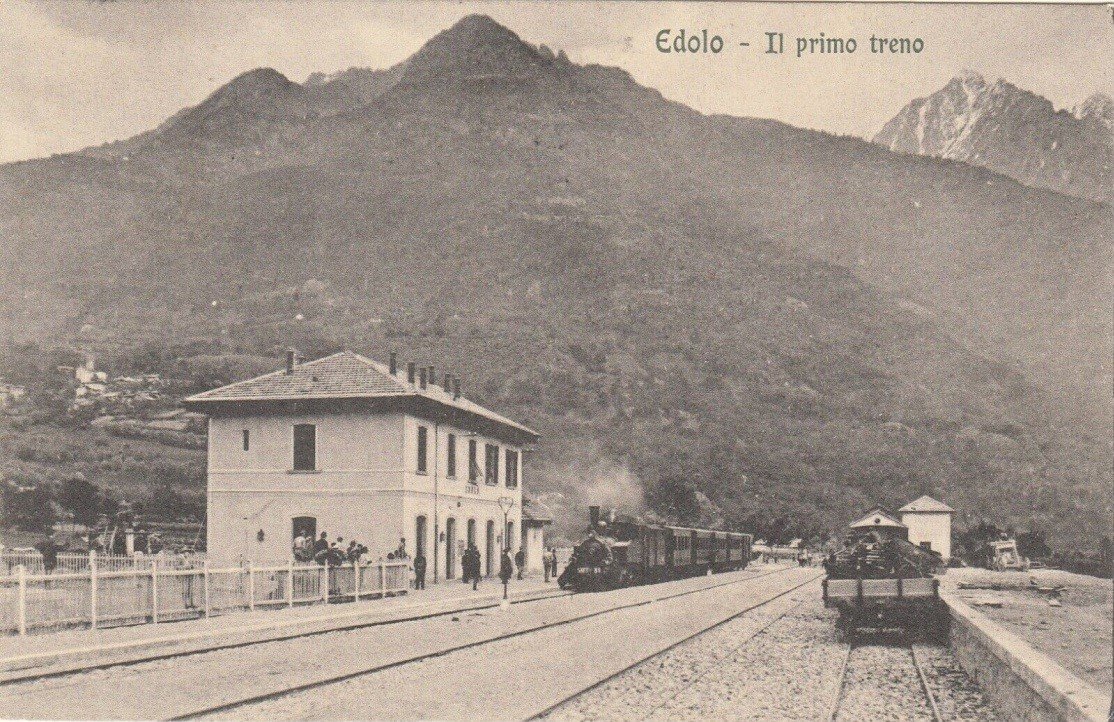

Edolo, the final stop, the end of the railway, but not the end of ideas and plans.
The valley does not in fact close, but bends on one side to the right, towards its final section. At the time of construction this was the physical border, the customs office at the Tonale Pass, with the Austrian world, an enemy from the outset. This justified and almost simultaneously consumed many of the resources intended for the railway. On the steeper left-hand side, it develops almost immediately into the Valtellina, but it also represents its spatial expansion, with plans for crossing the Mortirolo and connecting with German-speaking Switzerland, which some documents suggest had begun some years earlier, starting from La Spezia, and passing through Parma and Brescia before arriving here and stopping, at least for now.
Gallery

Edolo railway station and the monument to the Alpini unit on a 1950s postcard 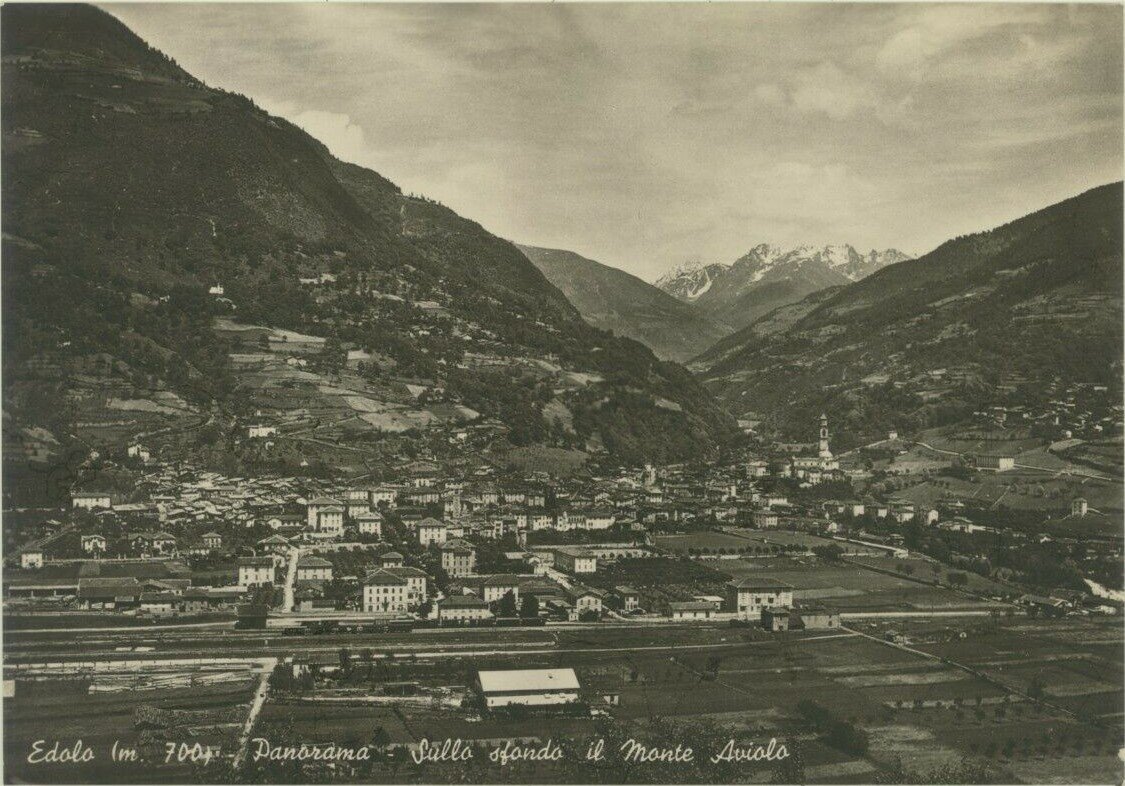
View of Edolo with Monte Aviolo in the background 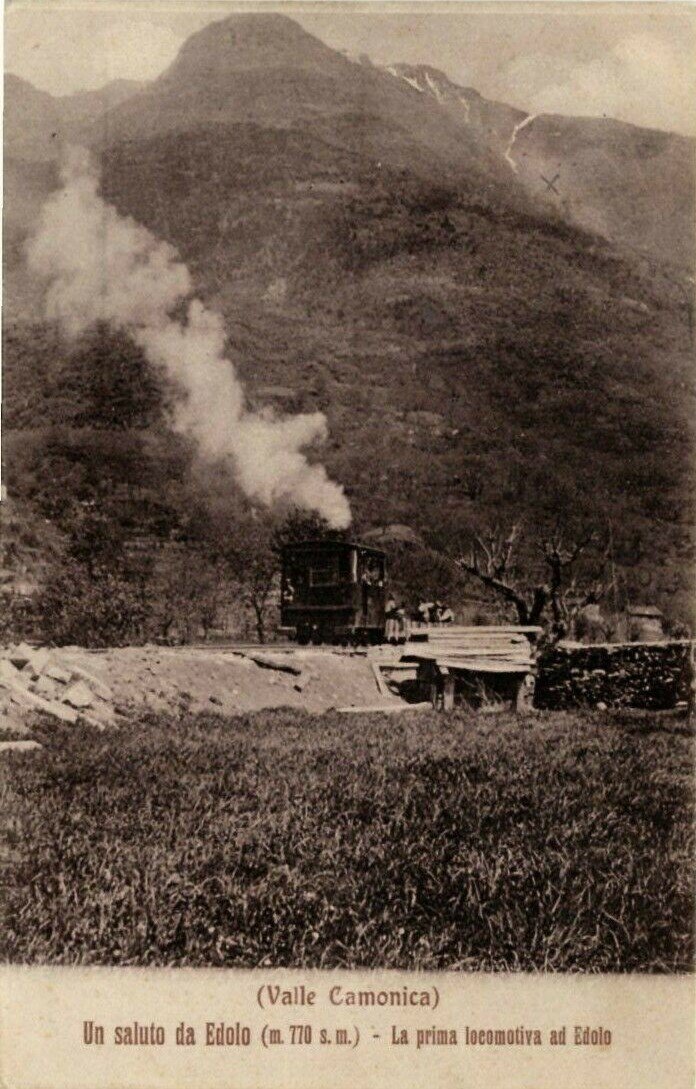
The first locomotive at Edolo 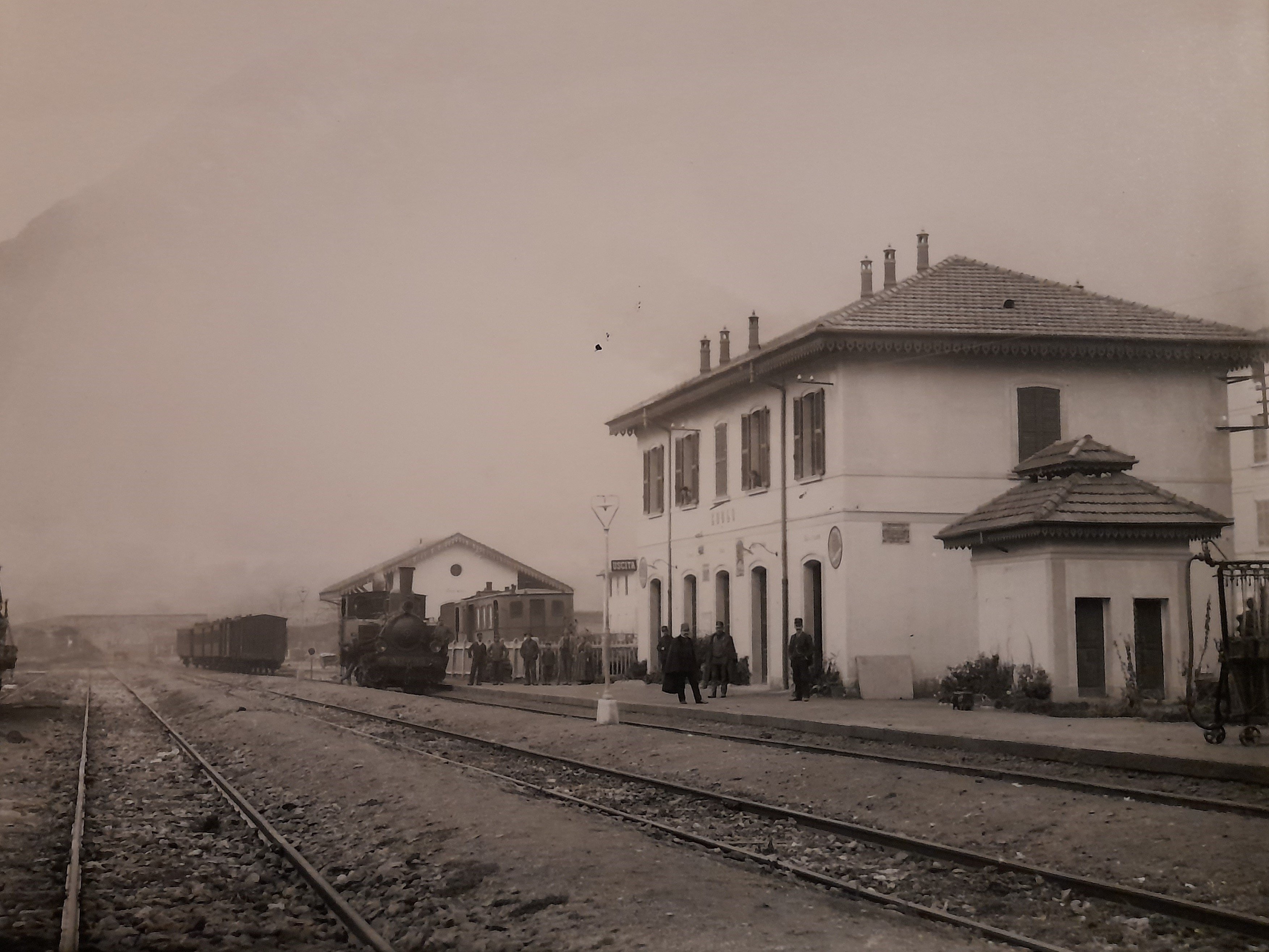
Track side view of the station in a period image 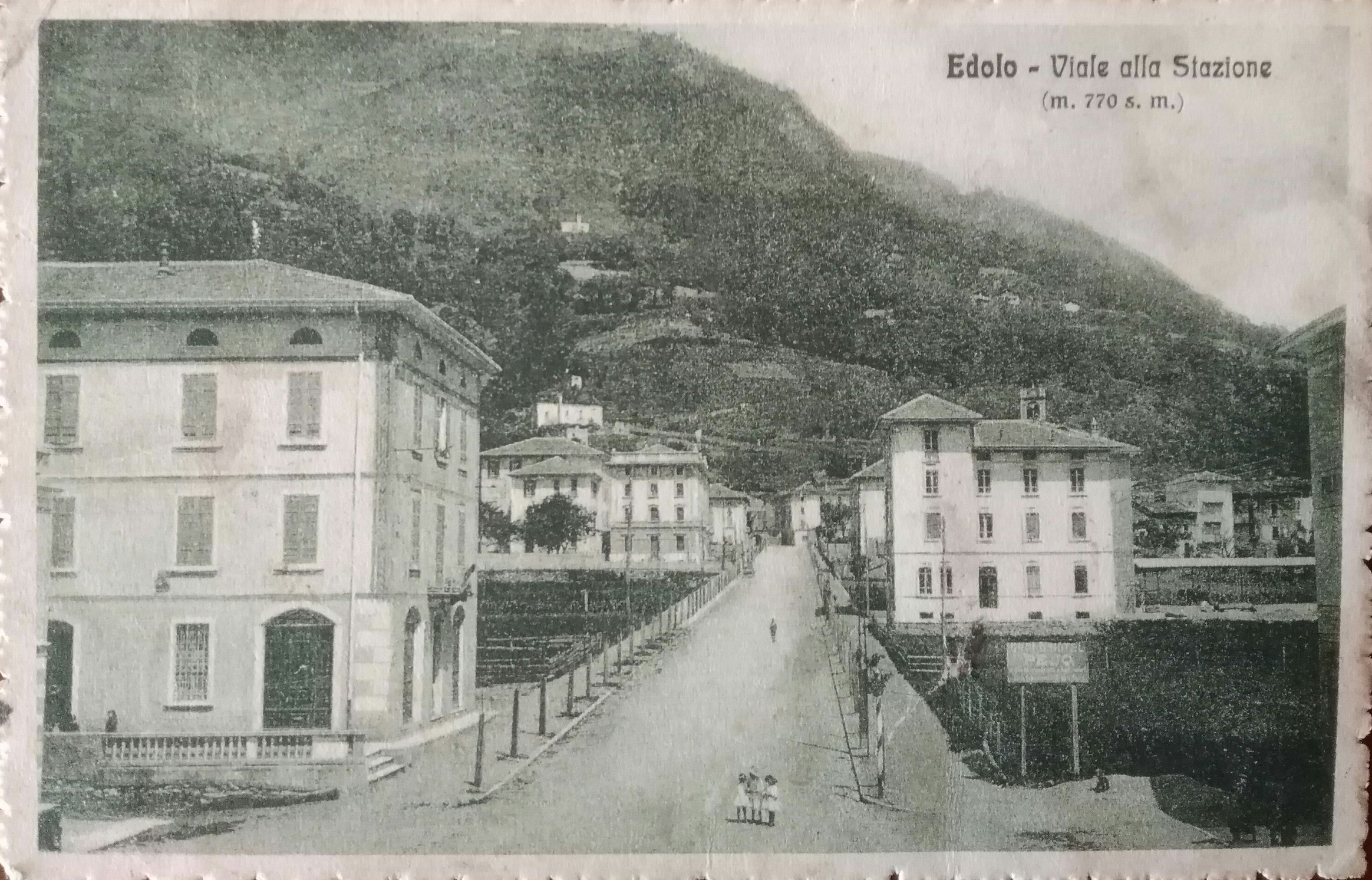
Times gone by: the station avenue, now Viale Derna 
The bridge over the Oglio, near Edolo, with men at work 
A trip around the villages of the Upper Camonica Valley. The Upper Camonica Valley is quickly reached from Edolo via a regular bus service. The first town is Incudine, where visitors can admire the Stations of the Cross in the church of San Bernadino, the Last Supper by G.B. Zotti in the parish church of San Maurizio, and the castle ruins. Set between two side valleys that form a backdrop for the town, Val Paghera in the Parco Regionale dell'Adamello and Val Grande in Parco Nazionale dello Stelvio, Vezza d'Oglio offer an enchanting view that impresses tourists at any time of year. There is also plenty to do without even leaving the town. Two places worth visiting are the parish church of San Martino, whose valuable items include a 17th-century wooden altarpiece, and the church of San Clemente, one of the oldest in the valley, which was originally a hermitage and hospice for pilgrims. Vezza d'Oglio was the site of a battle in the Third Italian War of Independence, where on 4 July 1866 a regiment of Garibaldini and Bersaglieri fought off the Austrians. The Museo Civico Garibaldino was built in remembrance of the Battle of Vezza, and houses a display of historical items. A museum in the Upper Camonica Valley that must be mentioned is the Museo della Guerra Bianca in Temù, the most important museum dedicated to the Alpine front of the First World War in Lombardy and Italy, which displays hundreds of objects recovered from the area. Vione is also of great historical interest, known for its recent finds of Lombard tombs, the preservation of its porticoes (“reölcc”), the remains of six towers which defended the castle and the grammar school (15th-17th century). The three centres of the town of Vione feature rustic architecture consisting of finely made arches and windows, wooden structures and building shapes of regular volumes. The tourist destination of Ponte di Legno is located at the edge of the Val Camonica, of which it is the last town, and also the biggest geographically speaking. Completely immersed in the wide valley floor, it acts as a border between Lombardy and the region of Trentino-Alto Adige via the Tonale Pass, and between the provinces of Brescia and Sondrio via the Gavia Pass. 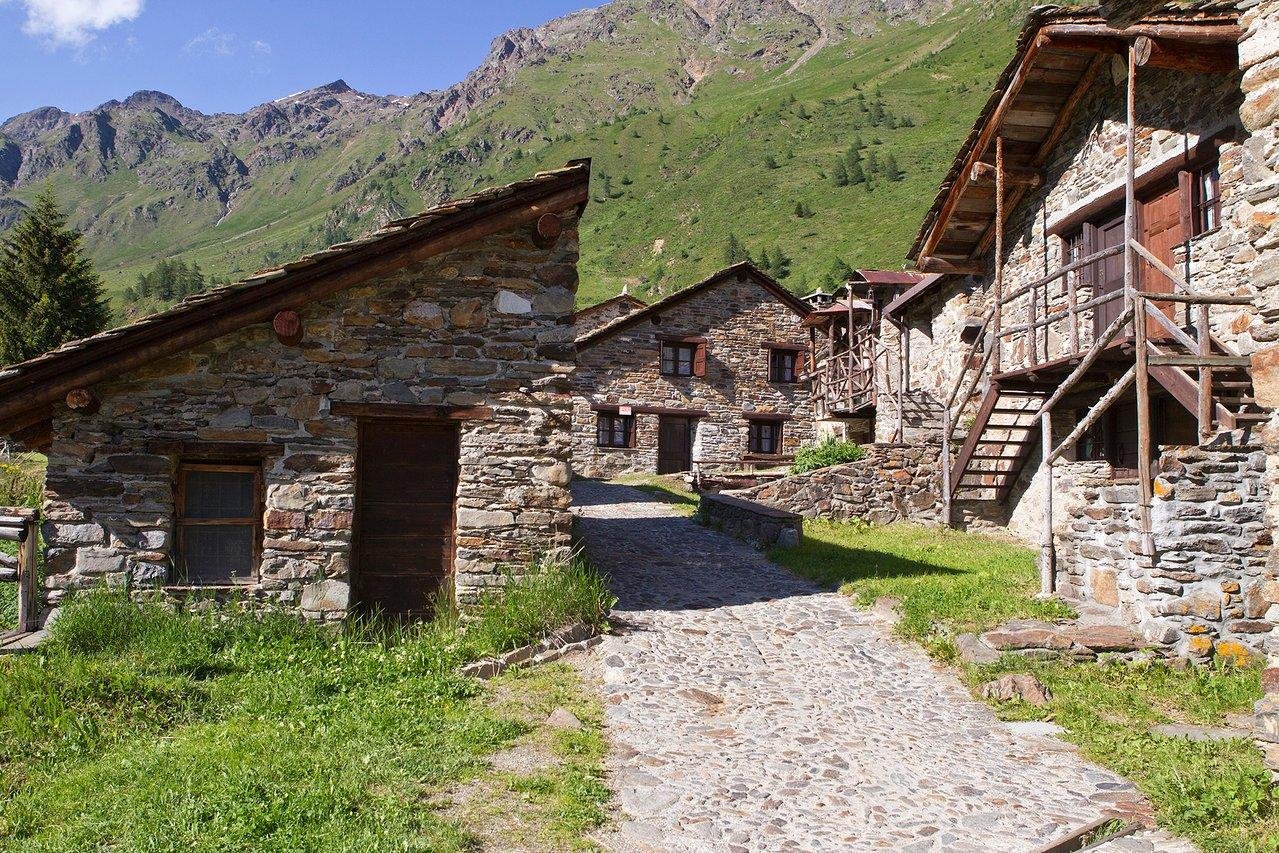
A trip to Case di Viso. A small Alpine village at altitude (1753 m above sea level) of the Valle di Viso, in the municipality of tourist destination Ponte di Legno. It is particularly known for its houses, which retain their original brickwork architecture intact, some dating back to the early 19th century. They were also the site of a Nazi reprisal after the armistice of the 8th September.